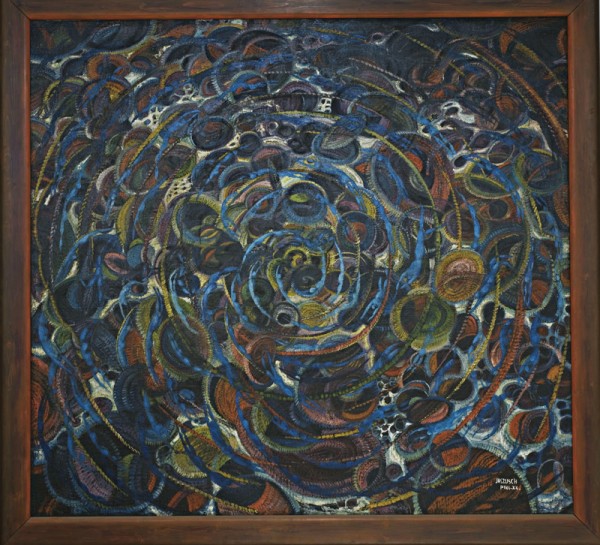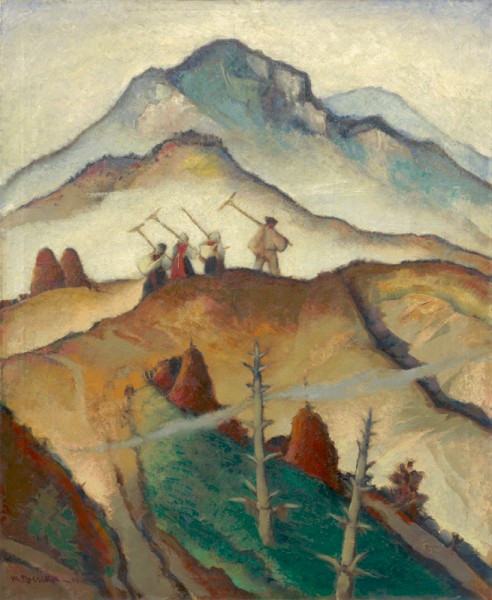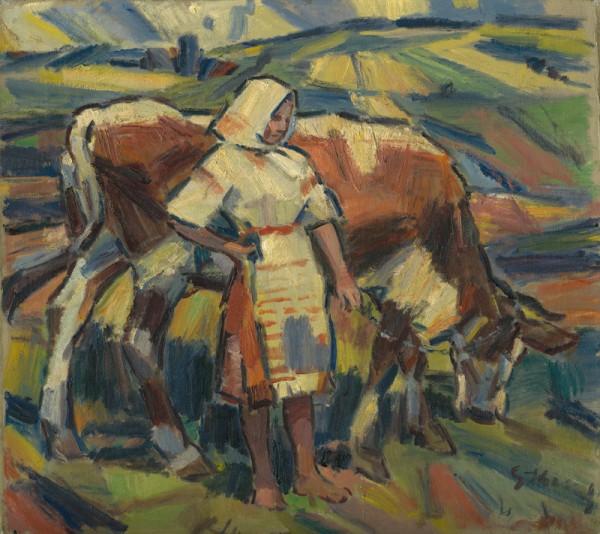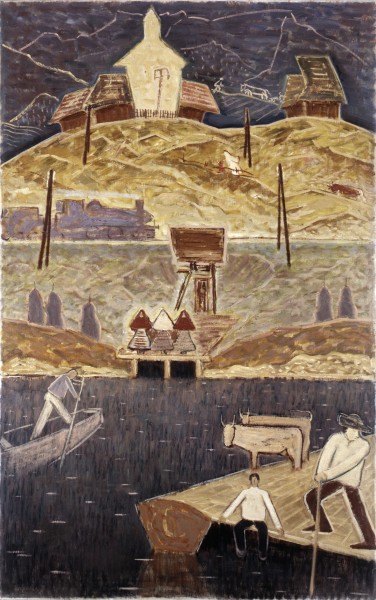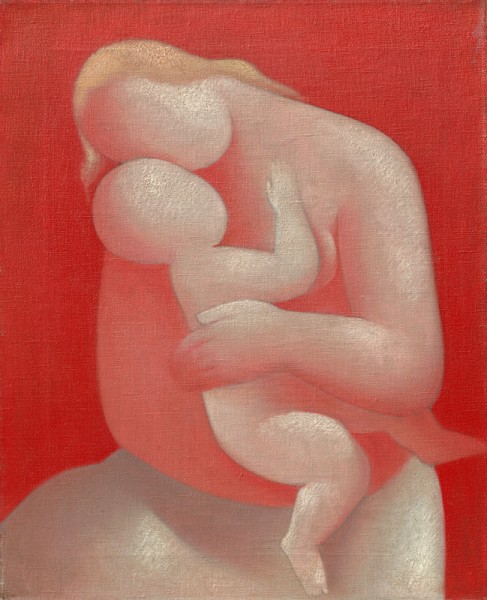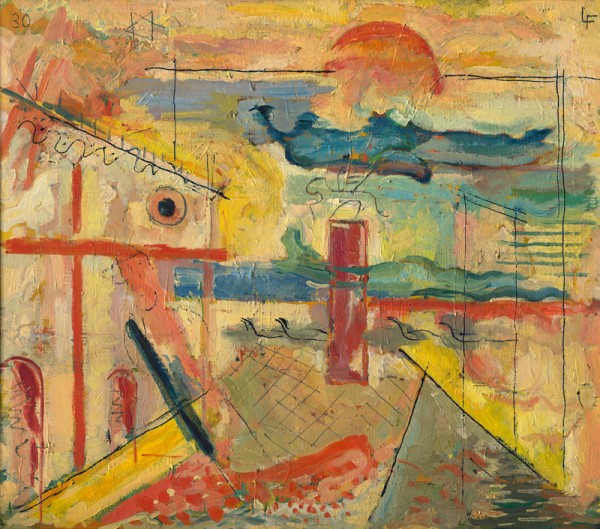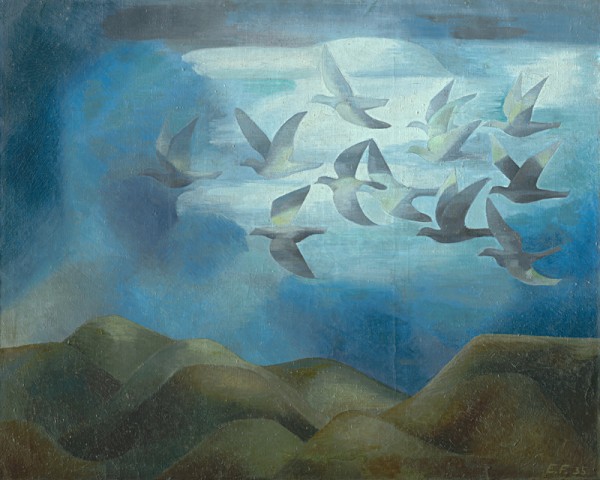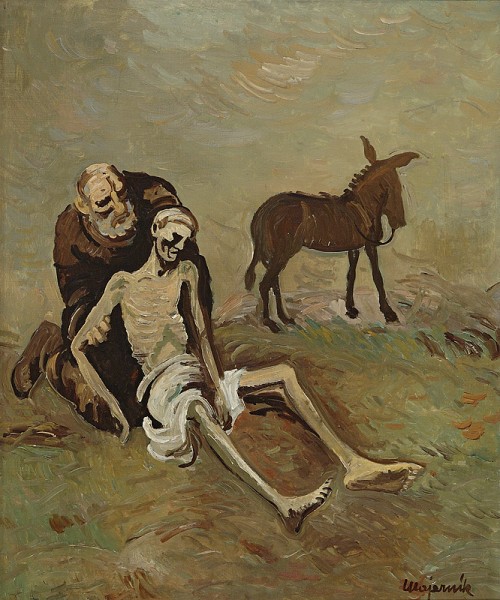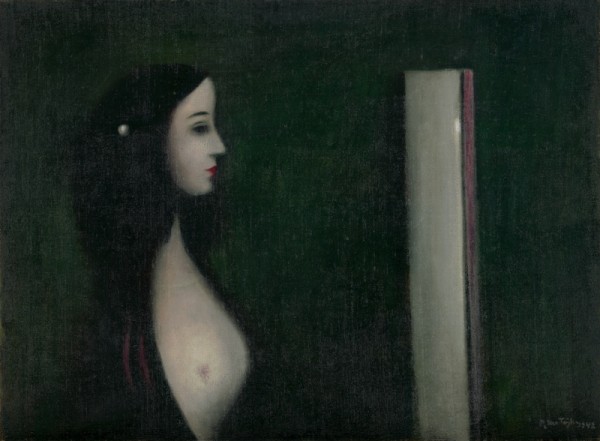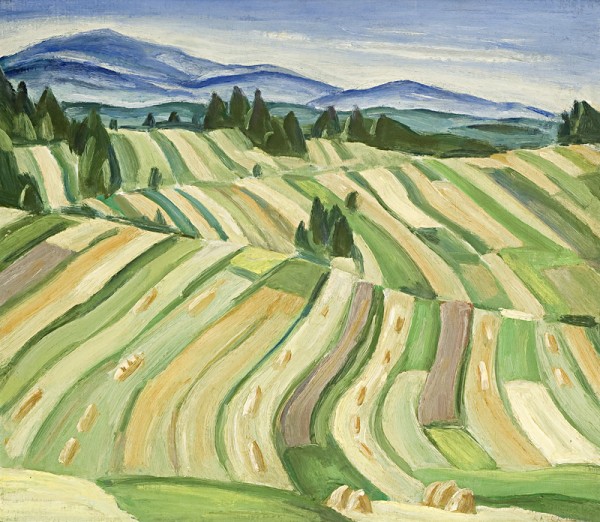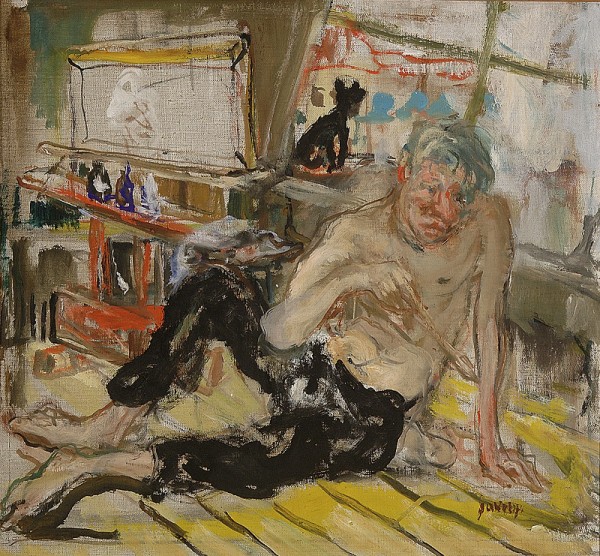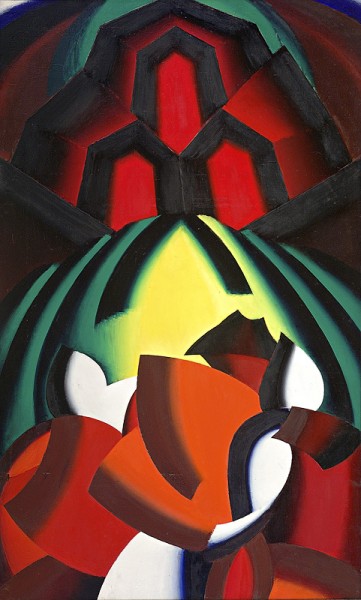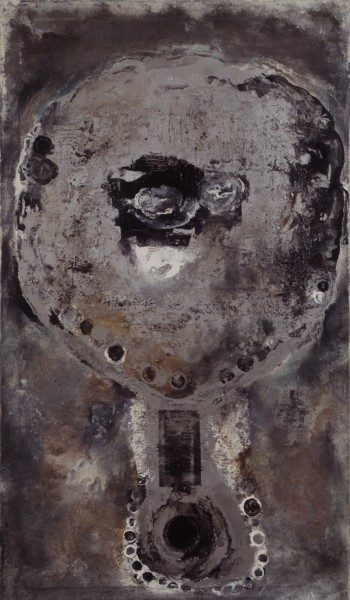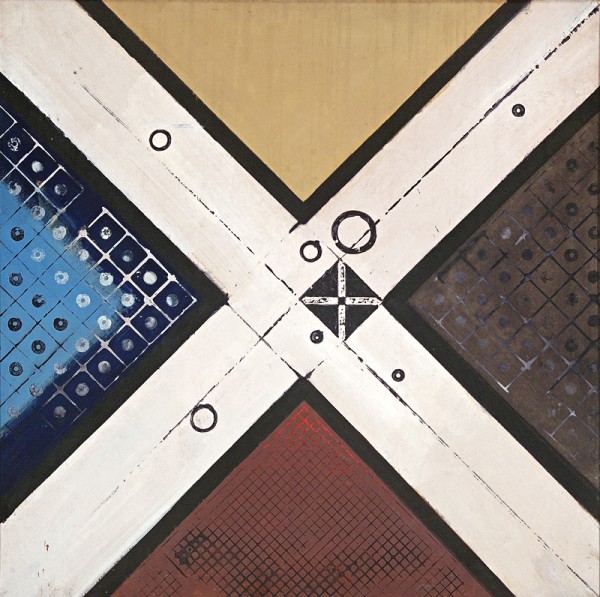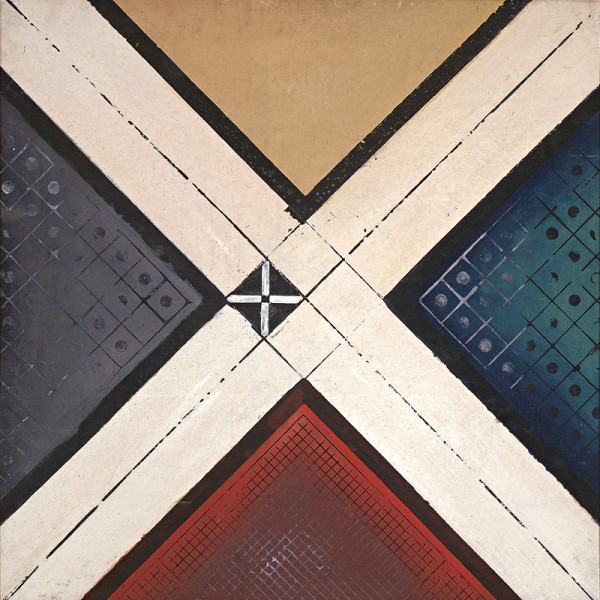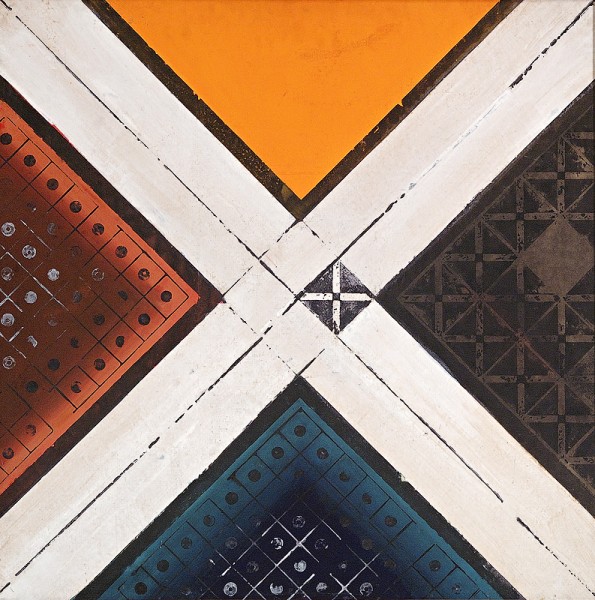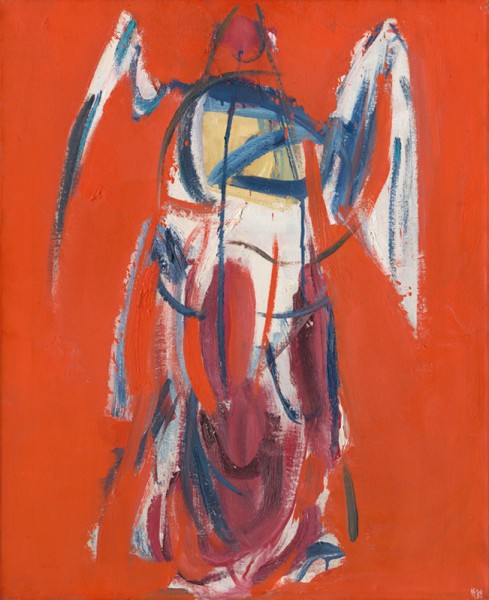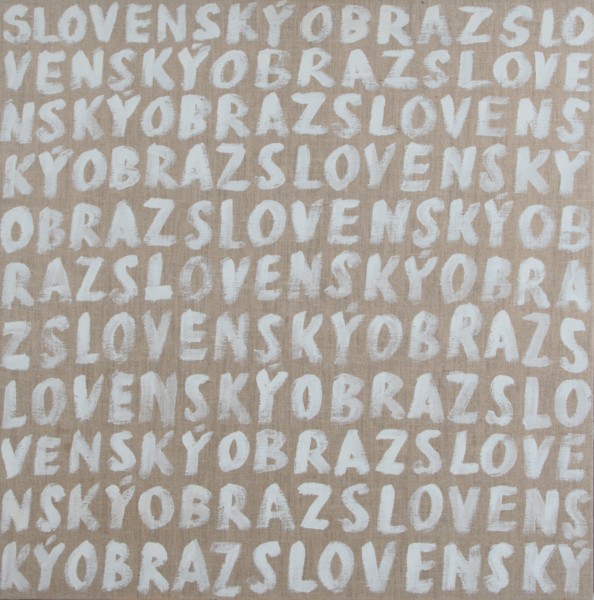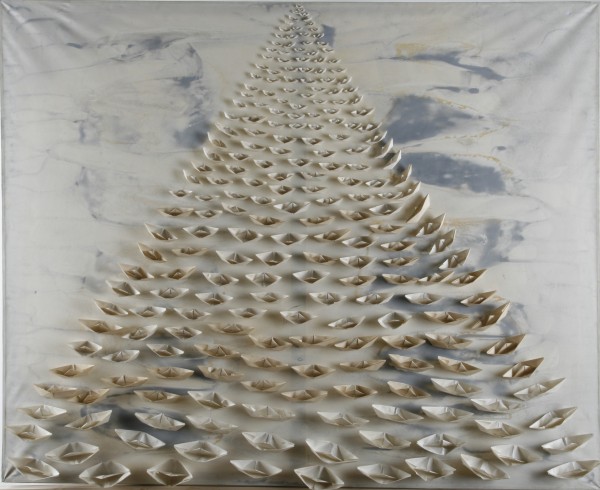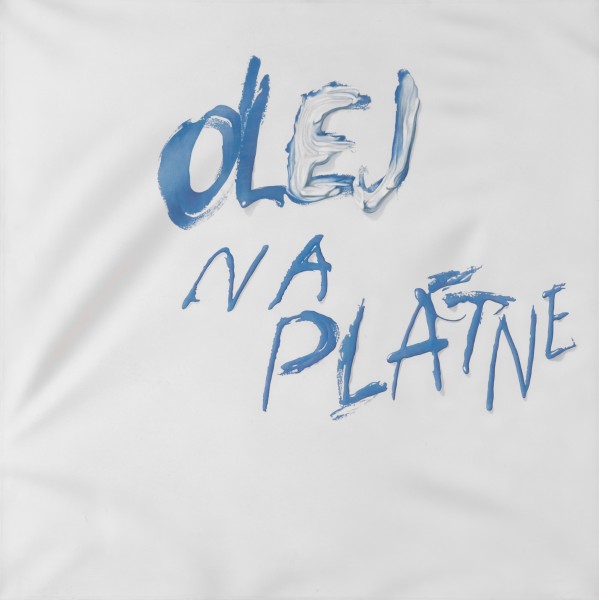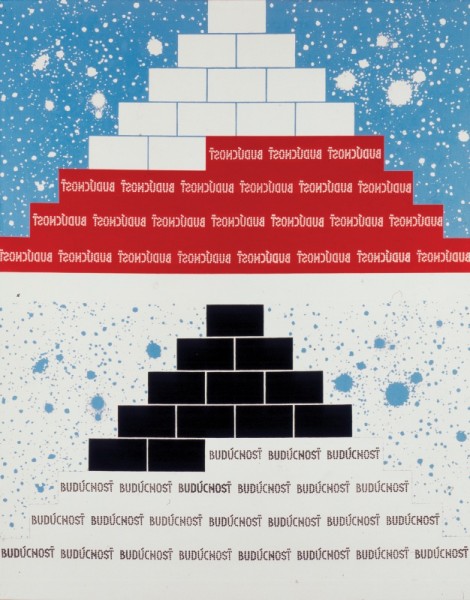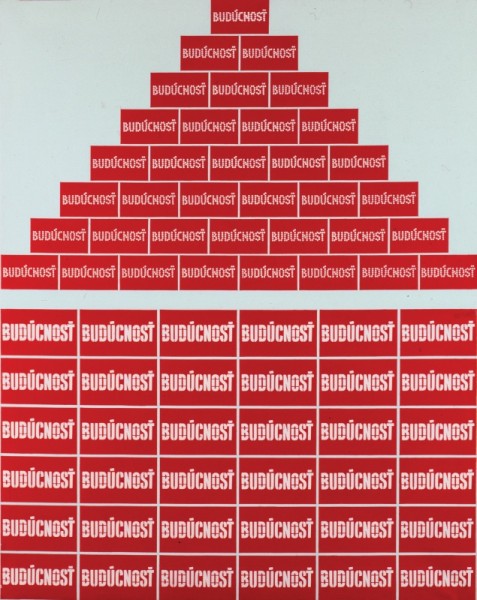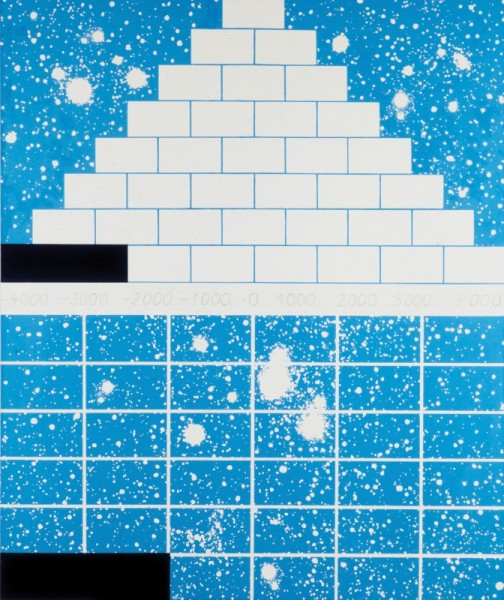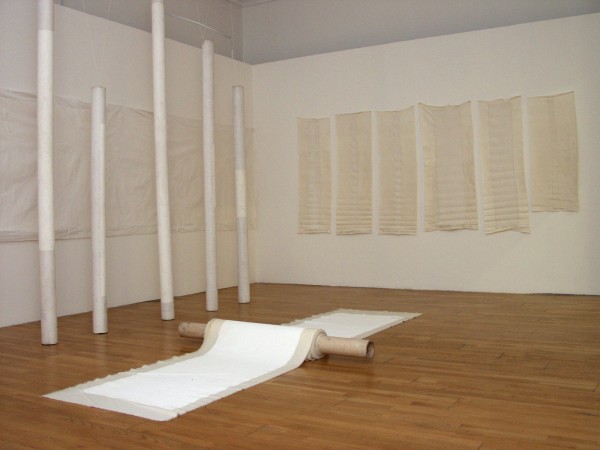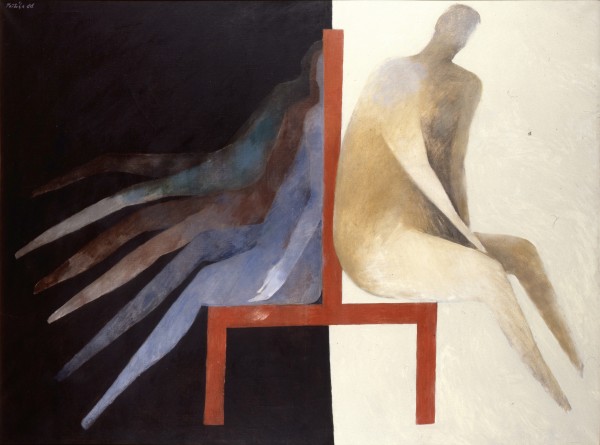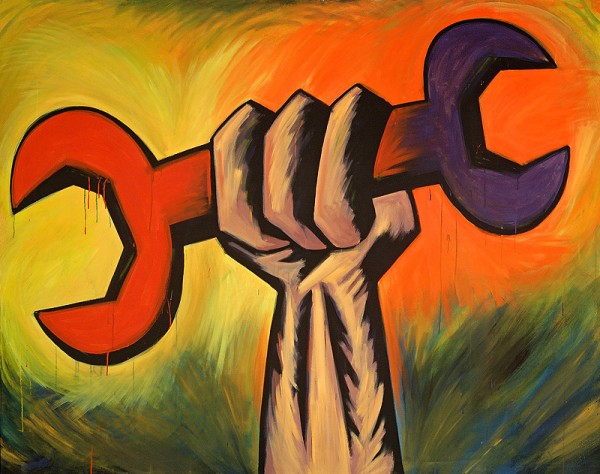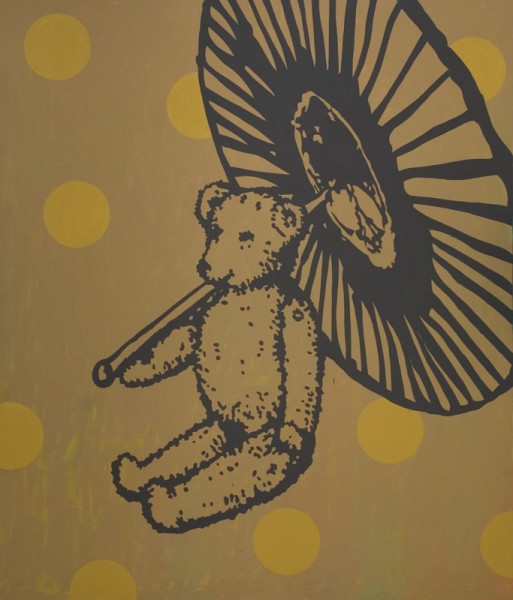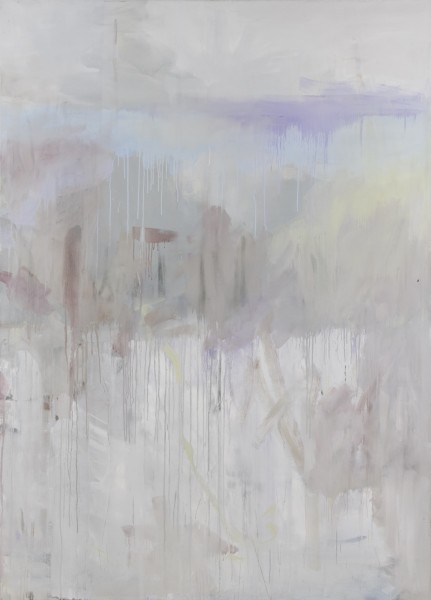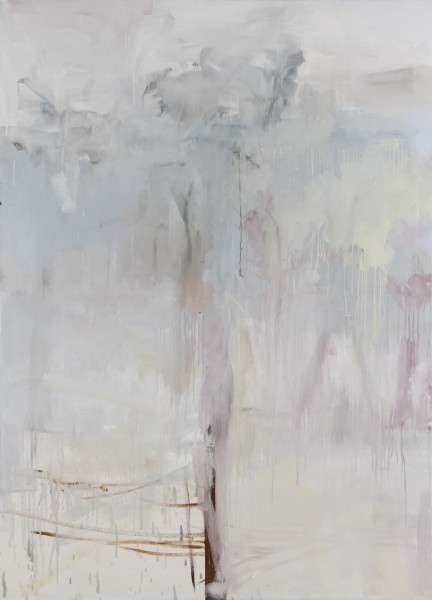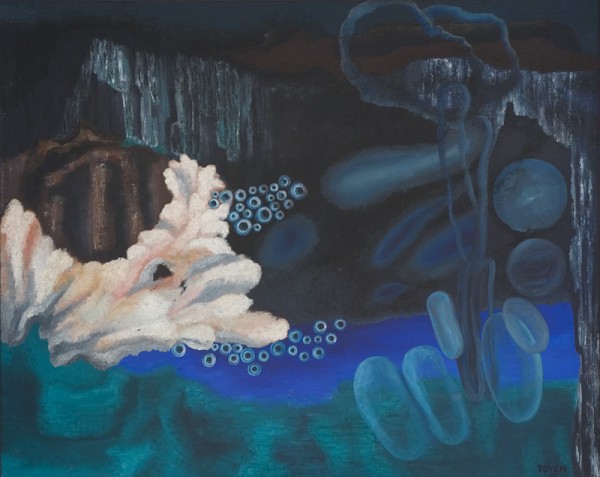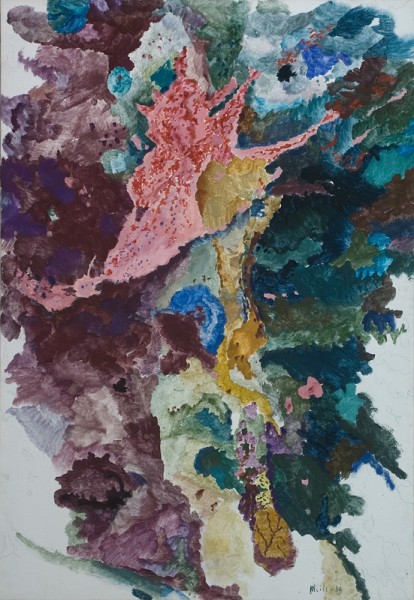The building of the Collection of Modern and Contemporary Painting (until recently chronologically divided into the Collection of the 1st and 2nd Halves of the 20th Century) began immediately after the founding of the Slovak National Gallery (1948). It was created from transfers from former state institutions and through purchases from artists and private persons. Curators Karol Vaculík and Ľudmila Peterajová played crucial roles in creating this collection. During the 1950s and 1960s, noteworthy sets of work from the turn of the 19th century, the supreme works of the classics of Slovak painting Moderna (M. Benka, G. Mallý, M. A. Bazovský, Ľ. Fulla, M. Galanda, I. Weiner-Kráľ), Košice – Eastern Slovakia avant-garde (A. Jasusch, K. Bauer, J. Jakoby) and the artists of the generations of 1909 and 1919 (C. Majerník, J. Mudroch, P. Matejka, E. Nevan, E. Šimerová-Martinčeková, V. Hložník, L. Guderna, E. Zmeták, etc.) were successfully collected through well thought out acquisition activities (and as a result of the collection of formalist works) and are presented in a truly representative way in the SNG.
This well-profiled and to a certain extent, closed set of Slovak modern painting became an inseparable foundation of each generation – exhibition, book and exposition – interpretation of the history of Slovak Moderna. The building of this collection over the years also reflected the interest in enriching it by works of current – contemporary – painting. Thus, in the 1960s they managed to create a noteworthy collection of works of neo-Moderna painting of the 1960s: from the beginning authors, who in that period achieved the first culminations of their work, through the generation of Galanda followers (M. Laluha, A. Barčík, M. Paštéka, R. Krivoš, R. Fila, A. Klimo, V. Kraicová) up to the classics, who at that time had achieved a new synthesis. The growth of this progressively profiled set was halted by Normalization; in the 1970s and 1980s, the further broadening of the collection of contemporary painting was rather “extensive” and affected by ideological and cultural-political requirements with an emphasis on a wide representation of “engaged” art. A new shift, particularly in the profiling of the collection of the painting of the second half of the 20th century, occurred only after 1989, when the gaps inherited from the previous period were partially filled in and the collection was enriched by new and older works of the key contemporary Slovak painters: R. Fila, M. Paštéka, R. Sikora, J. Bartusz, S. Filko, V. Popovič, J. Koller, M. Urbásek, M. Čunderlík, as well as younger authors: K. Bočkayová, M. Bočkay, D. Fischer up to the post-Modernists, such as L. Teren, I. Csudai, etc. New paintings were acquired after 2000 through purchases of the works of the most contemporary authors (B. Hostiňák, D. Sadovská, D. Lehocká, M. Kollár, M. Czinege, etc.). The collection also contains some European painting (M. Čermínová-Toyen, O. Domiguéz, S. Carchoune, M. Weiler, etc.), although its most significant pieces were stolen in 1992.
Curator of the Modern and Contemporary Painting Collection: Katarína Bajcurová

